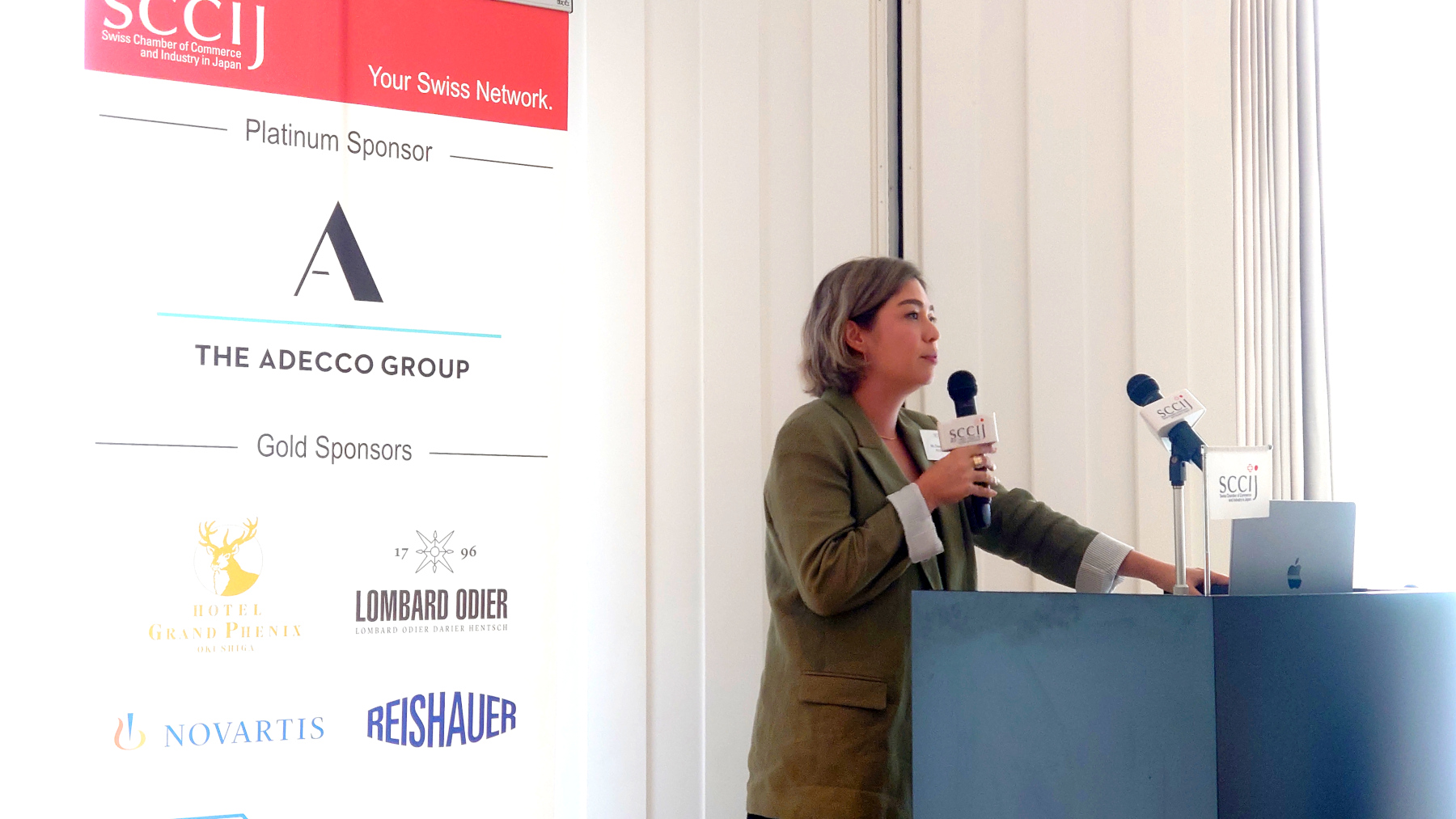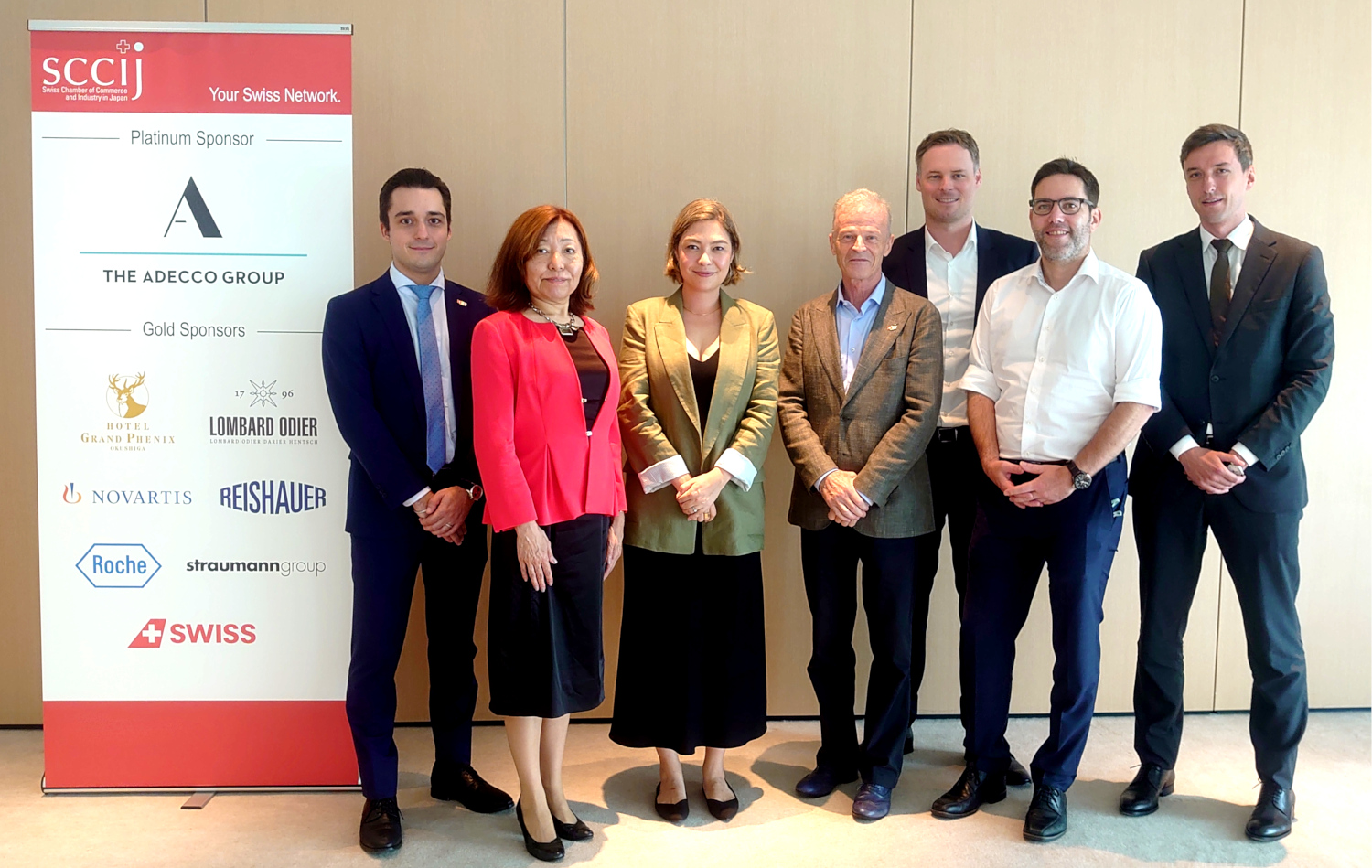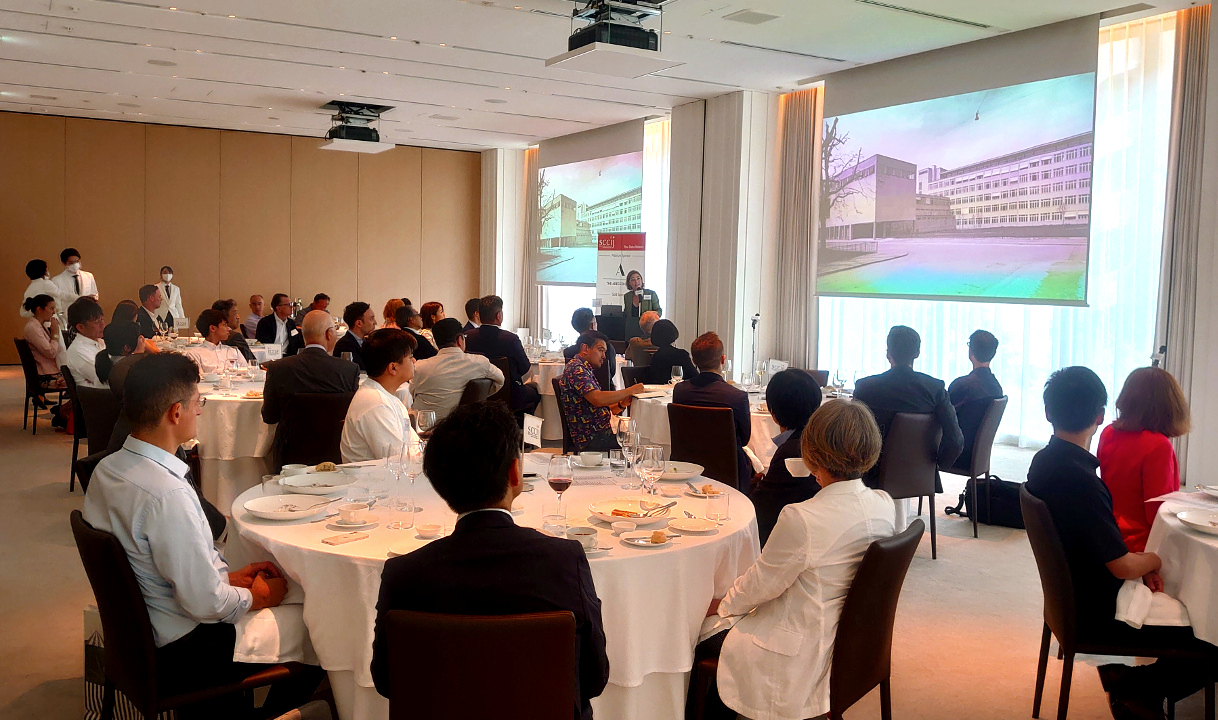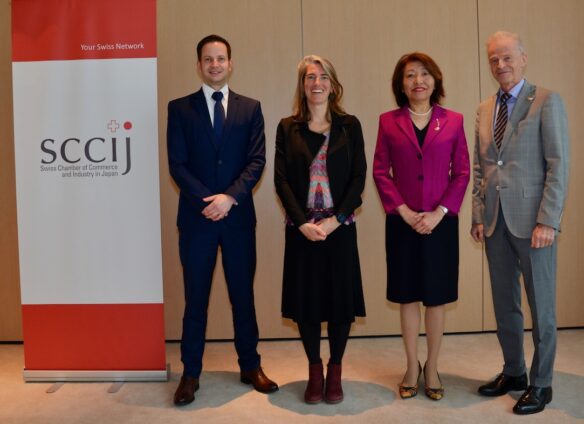Tokyo (SCCIJ) – At the August Luncheon, Ms. Tina Koyama, CEO & Co-Founder of POJ Studio, talked about the requirement of extensive design thinking for the creation of a commercially successful digital presence. About 50 members and guests of the SCCIJ attended the first luncheon after the brief summer break. We present her luncheon talk in Q&A form.

SCCIJ August Luncheon speaker Ms. Tina Koyama of POJ Studio talked about “design thinking”.
You started as an app designer, but your start-up in Kyoto redesigns traditional Japanese crafts. What motivated you to this switch?
Ms. Tina Koyama: After acquiring my design degree at the “Zürich Schule für Gestaltung”, my career was in designing apps for about ten years. When my mother took me to meet craftsmen across Japan, I learned that many of the artisans struggle to survive and that traditional crafts are in quite a terrible state. Hence, I saw the need that these century-old techniques survive. I thought that with my skills I hopefully could get some money to flow into this industry.
You distinguish between “design” and “design thinking”. Can you explain the difference?
T. Koyama: The classical definition of design points to making products more attractive. Switzerland has a very strong tradition in this regard. Contrastingly, design thinking is a creative process to better comprehend the customer and consumer needs. Design thinkers founded the “dschool” at Stanford University in 2004, Google hired its first designer in 2006. The product development of most of the tech industry is now rooted in this type of thinking.
But how does “design thinking” matter for your business's success?
T. Koyama: Companies with strong design thinking outperform companies with weak design thinking by 219% on the S&P 500 Index over ten years. In the past, engineers would start a digital or tech company, but today, many young companies are started or led by designers. That shows the relevance of this approach.

Members and advisors of the SCCIJ with August Luncheon speaker Ms. Tina -Koyama of POJ Studio.
If design thinking is a kind of business process, how does it work?
T. Koyama: It is pretty simple because it is about understanding customers. The first is empathizing with them by researching them. Observing what and where the problem is the key to making successful products.
Can you give an example from your business?
T. Koyama: Our first product was a “kintsugi kit”. Kintsugi is the Japanese art of repairing broken pottery by mending the areas of breakage with lacquer dusted or mixed with powdered gold, silver & urushi. This repair technology had been trending since we live in a time where sustainability is relevant. Kintsugi was a manifestation of this philosophy. Hence, we used social media to comprehend what customers would need by putting pictures and reels up. The number of likes and comments helped us to understand what the product should achieve. And this kit is our best-selling product today.

An impression of the SCCIJ August Luncheon.
Does “design thinking” also affect the marketing and sales of a product?
T. Koyama: I certainly think so. Our third best-selling product is a set of oryoki bowls. “With the help of user feedback and engagement, we decided to bring a matte version of the traditional bowls to market that showcase the beauty of the wood material to market”. One way of marketing is advertising on social media but it has become quite expensive. Also, since Apple change the privacy policy for its device usage, the quality of data in these sales channels has declined.
As a result, we increased our email marketing. Here, we test different layouts, designs, and contents of our newsletter templates with A/B testing: We compare the open and click rates and choose the more successful version. For example, we found out that the open rate increases by nine percentage points if we feature the actual artists behind our products in the email. Also, we increase the revenue share from this channel from zero to 50 percent.
What are your next steps in the design thinking process?
T. Koyama: We have just soft-opened our first store in Kyoto. Thus, we are going from e-commerce to brick-and-mortar. It is a renovated machiya house with a modern feel. Through collaboration with some friends, we combine shopping with resting and dining. People can stay there, see and purchase our products and eat and drink in a café. After all, we consider ourselves a lifestyle brand.
Finally, what is your vision for the future of the traditional craft industry in Japan?
T. Koyama: Japanese craftspeople do not make enough money. Their work environment is also not very glamorous. I think that higher efficiency of the production processes is needed. My idea is to apply technology and combine this with traditional craftsmanship. The higher output will increase the income of the artisans and help companies like ours to thrive.
Biography of the speaker
Born and raised in Switzerland by a Swiss architect father and a Japanese “craftswoman at heart” mother, Ms. Tina Koyama found a way to combine her passion for tech and design pursuing a career as a product designer in Tech. She worked in Tokyo and Silicon Valley, accumulating over a decade of experience in building products focused on customer needs. She co-started POJ Studio to foster a sustainable ecosystem within Japan’s crafts industry by creating a lifestyle brand.
Text and photos: Martin Fritz for SCCIJ





























